2019
2018
2017
2016
2015
2014
2013
2012
2011
2010
2009
2008
2007
2006
2005
2004
2003
| Exhibitions 2016 | |
| 28.05.-31.08 Exposition of works by Evald Okas: drawings, graphic art, paintings, objects exhibition spaces on II floor of the museum |
|
| Versatility is characteristic to the creation of Evald Okas. The artist was highly productive during his entire life. During three summer months, an exposition introducing rich creation of Evald Okas is open in Evald Okas Museum. The exposition provides thorough overview of the creation of the artist throughout the years. | |
28.05 – 26.06. |
|
Vano Allsalu's exhibition "One Other Time" in Evald Okas Museum in Haapsalu offers a selection of his paintings from the last decade. Vano Allsalu: When you paint, it may be even more important to know when to stop, to finish. This is a decisive moment. But the painting continues to ripen – in the painter's heart, in the eyes of the viewer. One other time, when you look at it anew, the painting has already changed. [...] Sometimes it is good to leave it, not to make a painting at all. Or to make it later, only when you really cannot avoid making it. In addition to the factor of the will and the time, the exhibition also raises questions about the artist's handwriting and visual language as a kind of structure, which in its changeability can even turn out to be its own opposite – a systemic urge, a chaotic pattern, (self-)ironical (self-)admiration. Or a set of visual elements that are self-organised by their intrinsic "wisdom of the swarm" – which leaves the creator merely the role of an applauder, of someone who tries to shoo the thrushes from the berrybush. The time with regard to the painting can be interpreted at the level of the internal dynamics, duration and speed of the process of its creation or as a journey that the viewer takes when exploring the painting. It can also be observed as a dialogue between oil and acrylic as slow and fast drying colours, or a relationship between the nature of visual forms and the "speed" of the artist's handwriting. The fabric of thought underlying the visible structure of the painting. The emergence of meaning on the borderline between the abstract and the figurative. Order and chaos. The stratification of layers of paint over one another. Johannes Saar (KUNST.EE 2016/1): In fact, Allsalu is essentially interested in colour and its accumulation on his canvas, the fierce movement of the brush across its surface and the pattern of dance steps that it leaves behind – a lapidary and robust trace of splashes, which allows the viewer, like a criminalist on the crime scene, to make ballistic calculations regarding the circumstances that caused the disorderly splashing of the paint onto the canvas. Vano Allsalu (born in 1967) studied painting at the Estonian Academy of Arts which he graduated in 1991. He is a member of the Estonian Artists' Association (since 1992) and Member of the Board of the Estonian Painters' Association (since 2012). Since 2011 Vano Allsalu has held the post of Associate Professor of Painting at the Estonian Academy of Arts and since 2013 he has been President of the Estonian Artists' Association. |
|
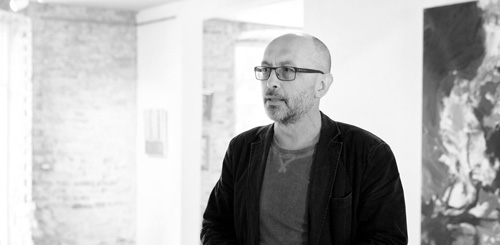 |
|
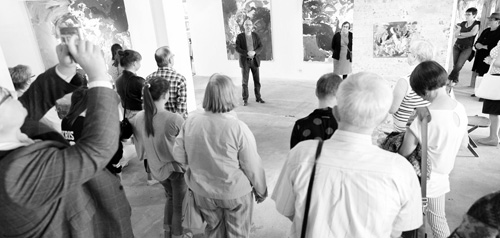 |
|
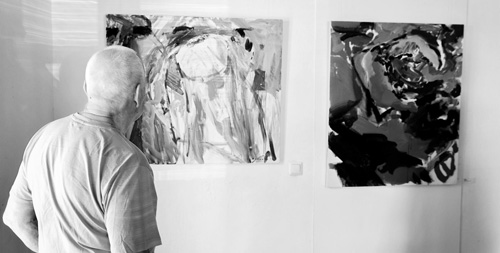 |
|
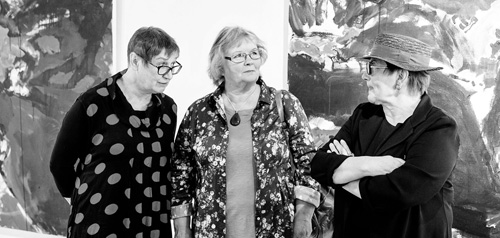 |
|
29.06 - 17.07 |
|
The exhibition includes three parts: 1. "Cosmic geometry" 2. "Nocturne" 3. "If we could only pass this forest" |
|
09.07. - 31.07 |
|
|
|
19.07-31.07. |
|
This time Katayama is doing both an exhibition and a workshop based on work by her and another friend Chikako Yokohama. By the way, the two artists from Japan have nothing to do with fashion. They create contemporary art usually using various shades of grey. For this exhibition, they are exhibiting drawings using "sumi" (traditional Asian ink) on "washi" (traditional Japanese paper), along with other contemporary pieces. There will be a three- day workshop held during the exhibition dates. Unlike European ink or paint, sumi which is supposed to be completely black will expose different "colors" depending on how it is used. Washi also is unique in the sense that they will move like living creatures by the drops of sumi. Having been used by man for centuries, the chemistry between these two materials is amazingly exquisite. The artists especially feel that both the colors black and white have always been the origins of things. For them the art is magic. For Katayama, her concept has always been to express her feeling of awe toward the cosmos that we all are swimming in. She uses almost anything to create art pieces big and small, sometimes in blue or brown. For this exhibition she ventures new methods such as by using pigments on washi. Meanwhile, sumi paintings have formed the core of Yokoyama's art for the past 20 years. During the first 10 years, she devoted herself to traditional sumi paintings, but gradually shifted to abstract art. In recent years Yokohama has visited historical sites around the world in order to discover the trace of human race. She tries to express this trace in her drawings while thinking about the life and feelings of ancient or even primitive people. Strokes are her thing, and she freely allows her brush to take her to wherever it may lead to. Hopefully the exhibition itself will lead us to an invisible "bridge" between cultures as varied as the multiple shades of sumi. |
|
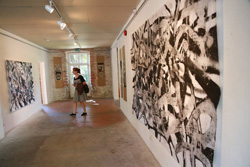 |
 |
 |
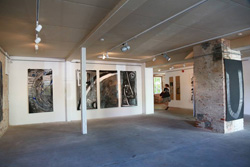 Photos by Arvo Tarmula |
03.08.-31.08 |
|
The Great Painter (1971), legendary Estonian children`s book with Ellen Niit`s texts and Edgar Valter`s pictures was published at a time when artists were granted official permission to participate in moulding the society and the latter was gladly welcomed in Estonia by the new generation of pop artists who perceived Soviet environment as grey and humdrum. In this cult and much interpreted children`s book with which several generations of Estonians have grown up, humanity calls the artist to remould the world, as "once upon a time, my dear, when the world had just been created, everything was uncoloured. Everything was made as if of water and looked equally blank outside and inside. How to tell difference between tea and ink, juice and milk, glue and honey, when everything is uncoloured?" |
|
 The workshop of raku ceramics and textile provides opportunity for self-improvement for artists and designers. The 2016 workshop is already the fourth time, when artists and designers meet in Evald Okas Museum, in order to spend a week, studying and testing the possibilities of clay and raku firing, textile and block printing.
The workshop of raku ceramics and textile provides opportunity for self-improvement for artists and designers. The 2016 workshop is already the fourth time, when artists and designers meet in Evald Okas Museum, in order to spend a week, studying and testing the possibilities of clay and raku firing, textile and block printing.  It was 2014 when Japanese contemporary artist Haruko Katayama found herself leading the "Fashion Drawing Workshop of the Estonian Association of Fashion Artists" that her fashion designer friend had suggested. One thing led to another, and Mari Roosvalt decided to invite Katayama to do an exhibition of her own.
It was 2014 when Japanese contemporary artist Haruko Katayama found herself leading the "Fashion Drawing Workshop of the Estonian Association of Fashion Artists" that her fashion designer friend had suggested. One thing led to another, and Mari Roosvalt decided to invite Katayama to do an exhibition of her own.